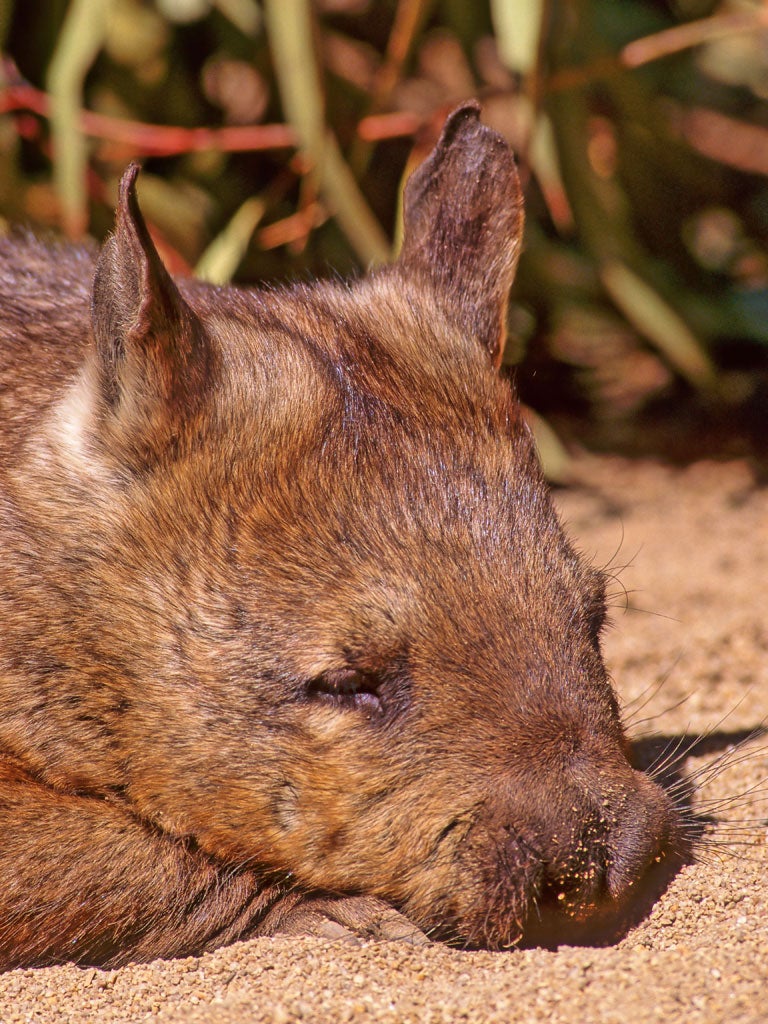Wombats hit by killer plants
Animals so sensitive they suck their thumbs if upset, suffer population crash

Your support helps us to tell the story
From reproductive rights to climate change to Big Tech, The Independent is on the ground when the story is developing. Whether it's investigating the financials of Elon Musk's pro-Trump PAC or producing our latest documentary, 'The A Word', which shines a light on the American women fighting for reproductive rights, we know how important it is to parse out the facts from the messaging.
At such a critical moment in US history, we need reporters on the ground. Your donation allows us to keep sending journalists to speak to both sides of the story.
The Independent is trusted by Americans across the entire political spectrum. And unlike many other quality news outlets, we choose not to lock Americans out of our reporting and analysis with paywalls. We believe quality journalism should be available to everyone, paid for by those who can afford it.
Your support makes all the difference.While Australia's northern hairy-nosed wombat may be one of the world's most endangered mammals, its southern cousin has, by comparison, thrived. But now a food shortage – and an invasion of toxic plants – has killed thousands of southern wombats, prompting fears of a local extinction.
Nicknamed the "bulldozer of the bush" because of its stocky build and ability to survive in an arid landscape, the southern hairy-nosed wombat is in a parlous state in the Murrayland region of South Australia, one of its main population areas. Many animals are emaciated, and have also lost their coats, making them susceptible to skin diseases and sunburn. Brigitte Stevens, who runs the Wombat Awareness Organisation, has been conducting food drops in the area. "We're up there four or five times a week, and we see hundreds of dead wombats every time," she said. "There's just nothing for them to eat. They're literally starving to death."
The principal cause, according to animal welfare groups and veterinary scientists, is that the native grasses which are the wombats' staple food have been pushed out by exotic plants such as onion and potato weed. The situation, created by poor land management, has been exacerbated by two years of above average rainfall during which the weeds have flourished. Not only do the weeds provide scant nutrition, but many of them are toxic and can cause liver disease.
Lucy Woolford, a veterinary pathologist at the University of Adelaide, says a number of young wombats are dying of liver failure. "But the main problem is nutritional stress, caused by severe habitat degradation. Over the last two years, we've seen far more sick and emaciated wombats than previously."
One of three species of wombat – the third is the common wombat – the southern variety is found in the grassy plains and open woodland of southern Australia, particularly near the coast. They live mainly underground, in burrows, on farming properties that have been over-grazed by sheep and cattle in the past and recently de-stocked. "That has led to an imbalance in the eco-system, with the loss of native plants and overgrowth of weeds," Dr Woolford said. "The wombats are also having to compete with introduced rabbits and hares."
The southern hairy-nosed wombat is still well off, however, compared with the northern species, which crashed to a low of just 35 individuals in the 1980s. Intensive conservation efforts – including IVF techniques to boost their fertility and building a predator-proof fence around their sole remaining colony, in central Queensland – have boosted their numbers to 138. But the species still remains more endangered than the giant panda and Sumatran tiger.
As well as delivering food parcels, Ms Stevens and a fellow volunteer have been rescuing sick and malnourished wombats and taking them to their care and rehabilitation centre in the Adelaide Hills. There the animals sleep in cots, beneath feather duvets, and are fed pureed sweet potato from a bottle.
Recently, Ms Stevens came across an adult female in a pitiful state. "She was just skin and bone, and she literally collapsed in my arms," she said. "She weighed only 6.3 kilos, and the vet said by rights she shouldn't be alive. But she's been putting on weight and coming back to health, and starting to get her hair back. We've named her Fate."
No one is sure how many southern wombats are left – they are notoriously difficult to count and no survey has been conducted since 1989. Ms Stevens says her group has a limited budget and can only provide a "Band Aid fix". "We're trying to cover such a huge area – half a million acres – and you're looking at 50,000 acres just covered in onion weed."
She also says that the wombats, far from being tough, are "very sensitive … They get upset really easily and suck their thumbs."
Join our commenting forum
Join thought-provoking conversations, follow other Independent readers and see their replies
0Comments